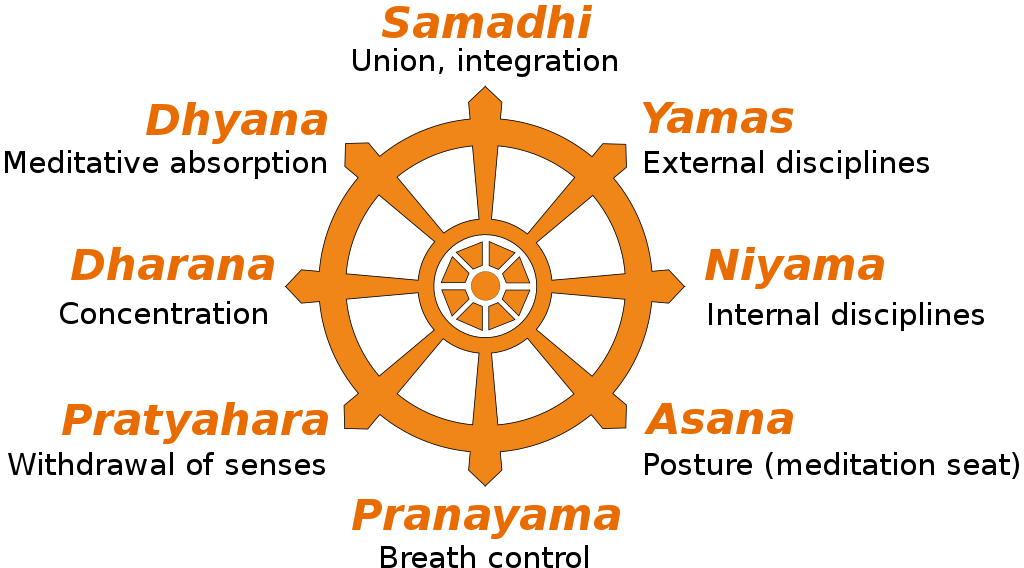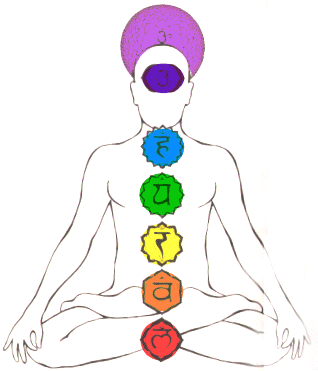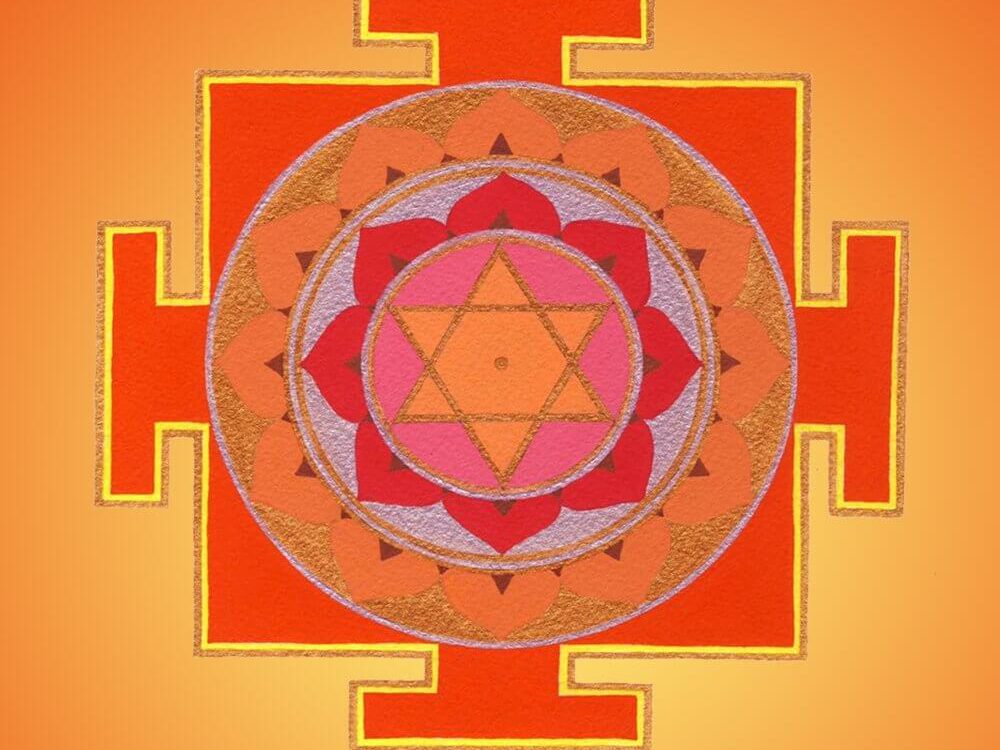
- Tantra, Yoga and Tantra Yoga
- Chakras, Desires and Kundalini
- Mother Nature as a goddess
- Mantra, Yantra, concentration and ritual in Tantra
- Meditation as a tantric practice
- Openness vs. tradition
- From teacher to student
- Perfection is an illusion
- Conclusion
Tantra is a holistic approach to the study of the universal from the perspective of the individual. The study of the macrocosm through the study of the microcosm. Tantra makes use of all the sciences available to us – astrology, physics, chemistry, mathematics, alchemy, psychology etc. – as practical means to realize the highest ideas and ideals in daily life. Instead of separating and categorizing the different areas of human knowledge, Tantra ties them together like pearls on a string. This beautiful necklace forms a unique instrument to expand the physical, mental and spiritual life of humanity.
Harish Johari – Tools of Tantra
What is Tantra Yoga?
In Tantra Yoga we work with all the energies that are available to us as human beings. Since we as humans are subject to a programming of categorization and separation through logic, it is difficult for us to create a complete picture of Tantra Yoga. Tantra tries to break down these categories and divisions and go beyond them in order to expand the universal possibilities of our human consciousness. In Tantra Yoga, the goal is to refine our thoughts, desires and emotions to create peace and balance. Tantra is a completely open concept in this sense. In Tantra we work with every energy that exists in nature.
Tantra, Yoga and Tantra-Yoga
The difference between Tantra and yoga makes the concept of Tantra even clearer. Ashtanga yoga, the eight-limbed division of areas in yoga, is about stopping processes. We stop bad behavior (yama, nyama), stop movement (asana), stop breathing (pranayama), stop the senses (pratyahara, dharana, dhyana) and stop “being” ourselves (samadhi).

In Tantra, on the other hand, we work with energy and make no distinction in the assessment of energy. Energy can take different forms, but it remains energy. We therefore use sexual energy, raw, negative emotions or socially unacceptable forms of energy, such as excrement or blood. This openness makes Tantra seem extreme and possibly repulsive to some cultures, but it depends more on the intention of the practitioner, i.e. why these things are used.
At the same time, yoga also contains tantric elements, as we also work with energy here and implement yogic practices in Tantra. The smooth transition is created by the open “non-system” that Tantra represents. The classification of energy systems is therefore also crucial.
Chakras, Desires and Kundalini
We can illustrate this well with the chakras, the typical characteristics of a chakra and the desires that each chakra brings with it. We naturally pass through the chakras in stages of our lives.

We start our lives with the lower chakras where we are interested in stability as babies and children – in the first and second chakras. In our teenage years we pass through the third chakra with an interest in fun and entertainment in life, as well as gaining status in society. Later in life we move to the upper chakras with the experience of giving love, accumulating knowledge and gaining spiritual connection. We go through this process naturally.
Kundalini energy is the driver of these chakras and when we strengthen Kundalini, we also strengthen the needs of the respective active chakra. This gives us the opportunity for accelerated development in our lives. However, if we have too strong a blockage in a chakra and we are not yet psychologically mature enough to deal with it, neuroses or negative emotions can intensify. In short – Tantra Yoga can enable us to undergo accelerated development, but at the same time offers the opportunity to reinforce unwanted behaviors.
Mantra, Yantra, concentration and ritual in Tantra Yoga
These tools also help us to classify things better and give us something tangible to work with:
- Mantra is a composition of syllables whose sounds have an influence on our human system. Mantras are a fundamental tool in transforming our gross consciousness into more subtle states.
- Yantra is the visual representation of a mantra to promote the ability to concentrate.
- Concentration is the essential skill in yoga and Tantra. The ability to focus on an object without interruption of thought is important for success in the transformation of energy in tantric practices.
- Rituals are a language to communicate with the spiritual world. In addition, rituals are performed in all cultures to support the individual in the psychological and psychic transformation to a higher consciousness.

Meditation as a tantric practice
In meditation, these tools all come together. We can use the mantra as a meditation object, a yantra to improve concentration and concentration itself to get into deep meditation. We can perform a ritual before and after meditation to strengthen the spiritual connection. As students of Tantra, we are thus able to energetically charge our yogic practices with tantric practices.
Openness vs. tradition
In Tantra Yoga, the student-teacher relationship plays an important role. The teacher will give his form of tantra that he has learned himself and is subject to rules. A master may live in a cave and work with bone skulls or blood. Another teacher may work with completely different materials such as flowers and lovely objects and with completely different rules.
However, both traditions have the same goal of expanding the student’s consciousness. The openness of Tantra Yoga has thus given rise to many different traditions which contain rules. The transformation of energy can accelerate our spiritual development, but at the same time we can fall further behind. That is why there are traditions, rules and teachers.
From teacher to student
Because of the flexibility and openness in Tantra, it is important to work with an experienced teacher who passes on his or her special tradition to the student. The teacher-student relationship is also very important because of the difficult accessibility of the individual to the subject and the responsibility for ourselves and others when we transform energies.
It is said that the teacher appears when the student is ready and so it was in my life. If we want to learn Tantra Yoga, there will be a way. Spirituality is a beautiful and sometimes difficult path. The signs that make themselves felt are often difficult to understand and easy to overlook. A teacher therefore acts like a lighthouse to guide us on this path.
Perfection is an illusion
But we should also not be too obsessed with our spiritual path. The desire to learn Tantra Yoga and find a teacher should therefore be a natural desire and not characterized by egoistic drives, although these are always a part of our human behaviour. Perfection is an illusion and the path of Tantra Yoga is fraught with beautiful mistakes. Especially when we go through difficult emotions and negative thoughts in these processes, we should try to adopt a relaxed attitude at the same time.
Conclusion
Tantra is an extremely open system and follows many traditions. There is a teacher-student relationship as well as tools that can be defined. The transitions between Yoga and Tantra Yoga are fluid and difficult to define. Therefore it is important to respect the tradition. If you are interested in bringing the mantra tradition or learning more about Tantra Yoga in an authentic way, please contact me.